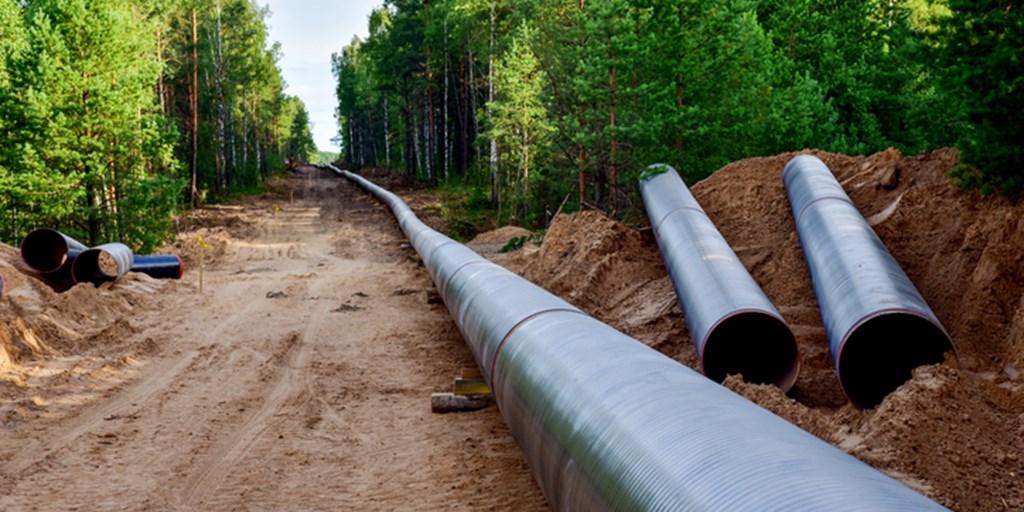The oil and gas industry is subject to some of the most challenging environmental conditions and effects in the world.
Extreme heat, pressure, corrosion, wear, and other factors all impact the equipment used in this demanding industry 24/7/365, much of which is composite in nature. To ensure composite products deliver reliable and consistent performance, an oil and gas heat shrink tape is required.
We’ll explore the advantages of oil and gas heat shrink tape shortly, but first it’s important to understand why composite products are important to this industry. Composites can be found across a variety of applications in oil and gas today, ranging from fluid transfer pipes and tanks to deepwater and ultra-deepwater offshore drilling and exploration equipment.
Advantages of carbon fiber and other composite products for oil and gas include:
- Corrosion Resistance — They allow for prolonged usage and longevity in corrosive environments such as salt water and where harsh chemicals are used. This is an environmental benefit in that leaks due to corrosion are reduced.
- High Strength — Carbon fiber and other composite components have a much higher tensile strength than steel (in some cases up to seven times higher), allowing them to perform more reliably when exposed to various forms of pressure.
- High Durability — Because of its strength and corrosion resistance, carbon fiber has a longer lifespan than steel products and can stand up to harsh weather, high temperatures, weather, aging, and rough use.
- Lightweight — Carbon fiber is vastly less dense than metals such as steel and aluminum, making it ideal when weight reduction is a goal for a part or process.
In order for a composite part to achieve these properties, it must be properly compressed during a curing cycle, when heat is applied to multiple layers of material and resin. This process eliminates unwanted elements such as gas, voids, and other foreign object debris (FOD) while consolidating layers and creating a consistent surface finish.
While there are a variety of heat shrink film solutions available, not all provide consistent compaction as curing temperatures increase. For example, some materials must be tightly wrapped before the curing process and relax as temperatures increase and resin begins to drop in viscosity. This is the exact moment when greater and sustained compaction is needed. To solve this challenge, we developed our line of Hi-Shrink Tapes that apply compressive force on a tailored curve, increasing the pressure as temperatures rise.
Examples of Oil and Gas Heat Shrink Tapes
500 Series
Whereas our 100 and 200 Series of Hi-Shrink Tapes are some of the thinnest available on the market, our 500 Series Hi-Shrink Tapes are much thicker at .005” (0.0125 mm). This increased thickness results in much higher compressive force and maximum diameter shrink (which can be customized to your unique application). It’s designed for curing temperatures up to 330°F (165°C) and is ideal for thicker-walled composite parts such as large-diameter composite tubing. As with many of our other Hi-Shrink Tapes, the 500 Series is available non-coated, release coated on one side, or release coated on two sides.
HT Series
Depending on your application, you may have complex or uneven components made of composite materials that also need appropriate compaction. And as with other composite components, higher curing temperatures may be required to consolidate the composite layers. Dunstone designed the HT Series of Hi-Shrink Tapes for these types of applications. Made of two layers of ethylene tetrafluoroethylene (EFTE) sandwiching a nylon layer, the HT Series provides reliable compaction for temperatures up to 356ºF (180ºC). It has strong natural release characteristics and is non-coated yet leaves no trace transfer.
These Are Just Two Examples — Get the Right Heat Shrink Tape for Your Application
We understand that every application is unique and demands equally unique production support. Our Hi-Shrink Tapes and Hi-Shrink Tubing can be custom-tailored according to the demands of your application and the environment in which they’ll be used. Another key benefit of our shrink tape is that it can and is often used in the field to make repairs to existing pipes — adding another use case beyond upfront production.
We put decades of engineering and manufacturing expertise to work in each project to ensure that the tape or tubing provided delivers reliable performance and results, which in turn results in stronger products. Our Hi-Shrink Tapes and Tubing are much more cost-effective than other materials due to their thinness. And, our tapes and tubing can be provided in custom sizes and lengths, allowing you to get the exact material that works best for your production process. Our team is also available to advise you on how to best apply our products to your composite parts to maximize performance.
The best first step is requesting a sample of one of these materials. You don’t have to know what material you need, though — simply let us know your application and goal, and we’ll provide a recommendation.
